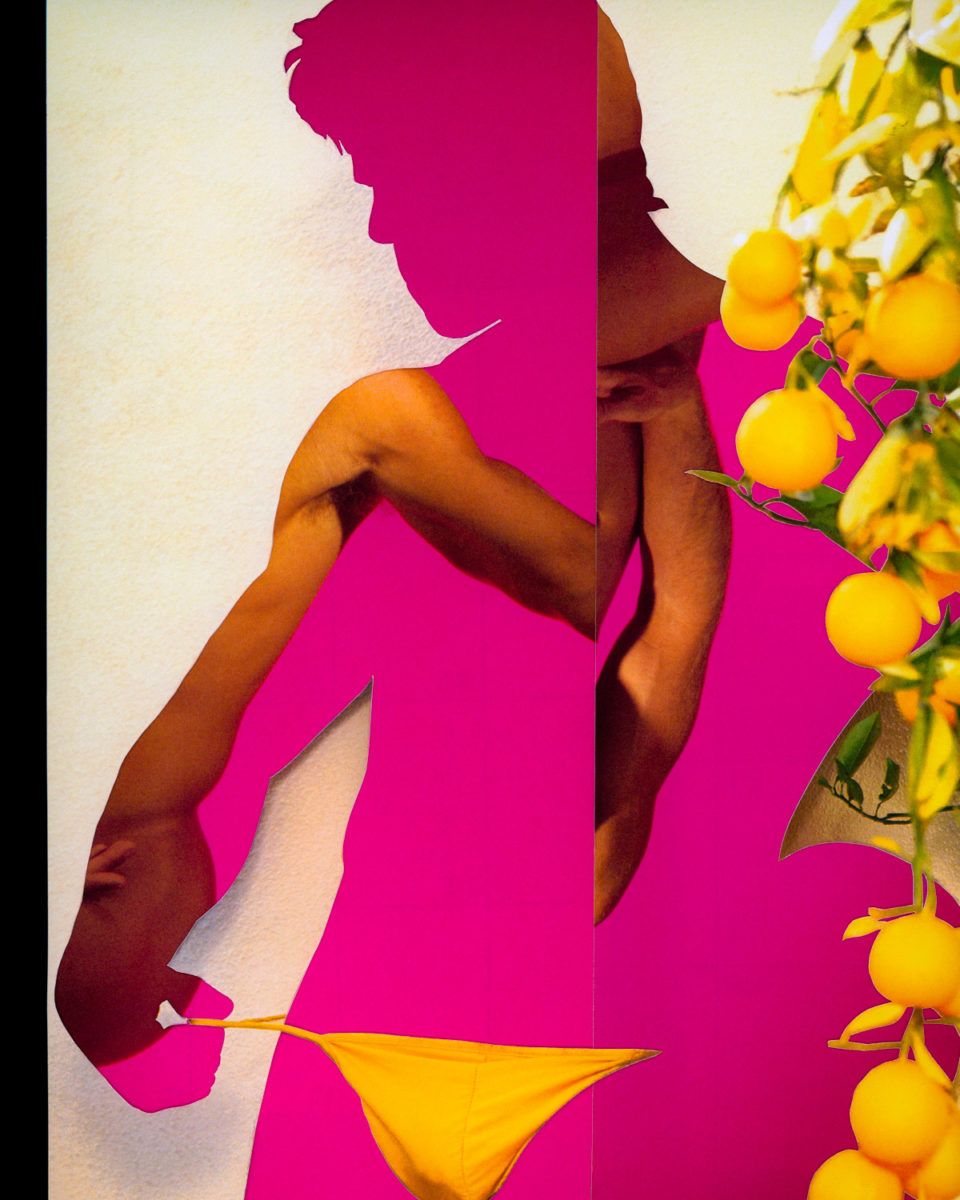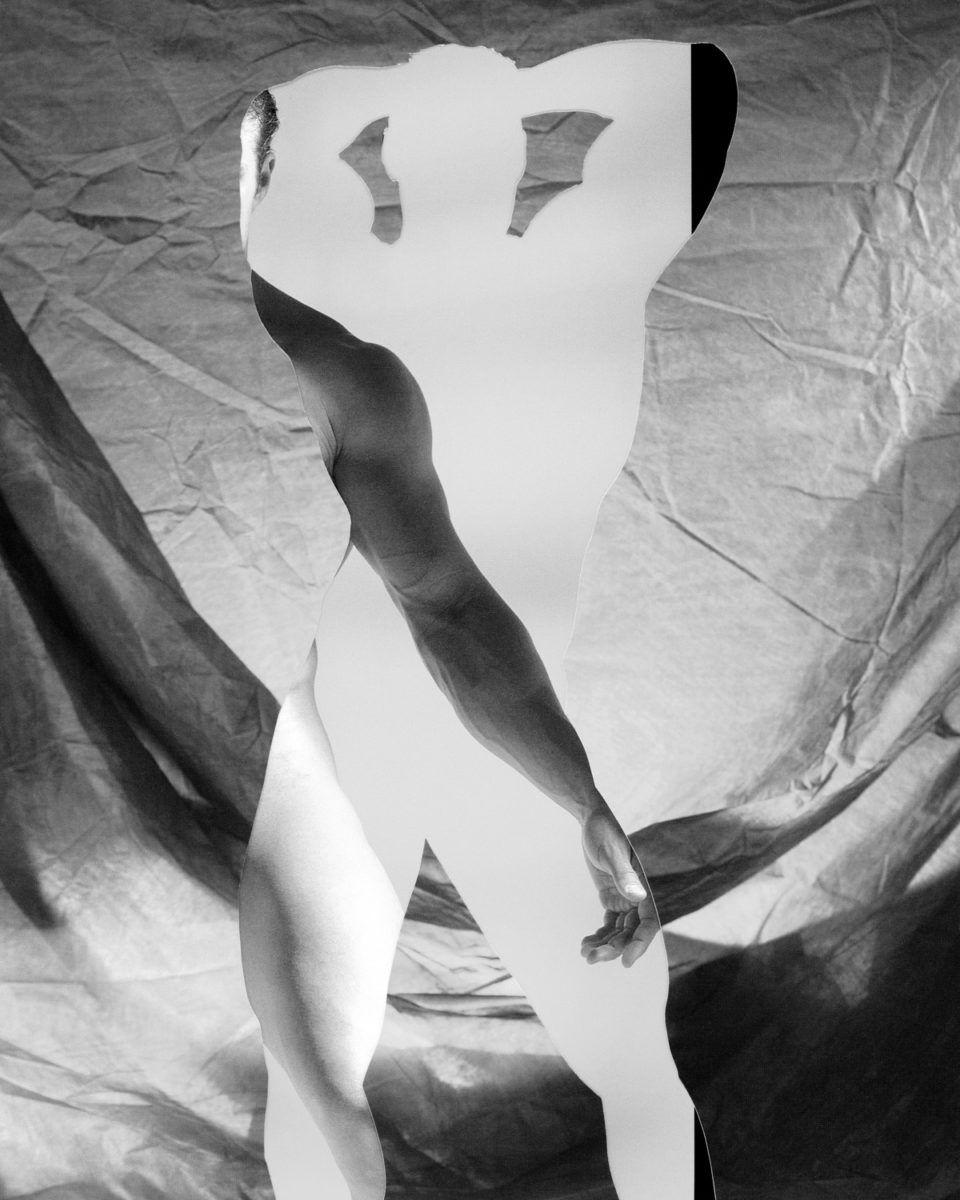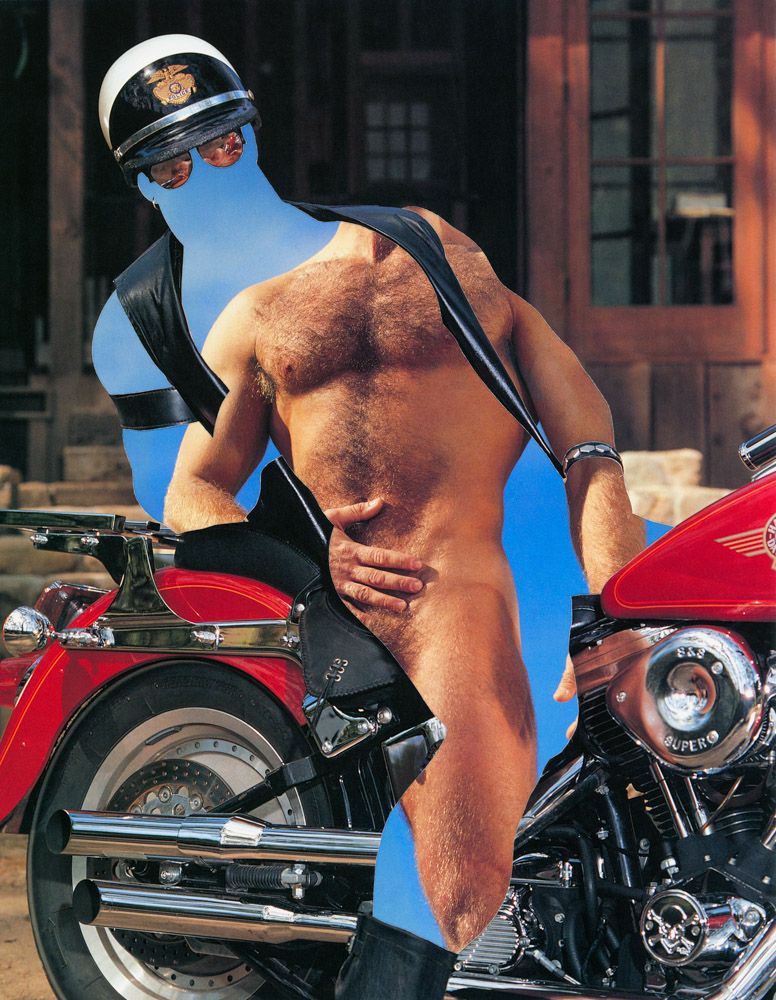blog
Interview with photographer Michael Young

Crown of Bougainvillea, December © Michael J. Young
Michael Young’s work in his ‘Hidden Glances’ series is a visual exploration of his past and present. The viewer literally, and metaphorically, is viewing overlapping layers of time and identity placed into a single new plane of existence. What if we all could fold time and reflect upon who we were and who we’ve become? What would the process reveal, and what would we do with the knowledge? Like a visual existential poet, Young takes the brave step to inquire, and presents the results in a poignant way that is personally sentimental, inherently nostalgic and also enlightened.
Cary Benbow (CB): The current issue of F-Stop Magazine (Dec. 2021) includes images from your project ‘Hidden Glances’, can you tell us about this project? What led to this work?
Michael Young (MY): This project is probably my most personal work. While I am using vernacular imagery taken from vintage gay pornographic calendars, the material and the work speaks to a part of me I tried to suppress and cover for so many years. Given that I’m now 42, I’m just now hitting a point in my life where a little over a half of it has been spent being out.
The work started by chance. I was working on another project that was loosely based on my grandfather’s time spent in the Korean War. He was never one to speak of his time at war, and I was just 10 years old when he passed away. Many of those stories died with him. However, one story was told a few times by my grandmother around her dining room table, and she mentioned another sailor made a pass at my grandfather on a ship. Legend has it, my grandfather refused his sexual advance with a punch to the face. As a young boy who was always teased for being gay, the story which was meant to highlight my grandfather’s heterosexuality piqued my interest, and also scared me.
At the time I cannot say I knew I was gay, but there was something about the story that always left me wondering about the other sailor. Using this specific story as an entry point into the work, I began to search out magazines that homosexual men would look at in the early 1950s. My hunt led me to this really kind and generous seller on eBay named David. Since I was buying so many magazines from him each week, he began to toss in extra items as thank-you gifts. One of the packages had a few gay calendars from the period of time when I started to realize I was gay. I began to order a few more from time to time until I realized that I was drawn to these calendars because they were the types of pornographic items I would have been trying to sneak a glance at during my youth. The fact that they were calendars, which marked the years when I was in the closet, gave them this sentimental component.
CB: How does ‘Hidden Glances’ relate to your other projects?
MY: The process for making ‘Hidden Glances’ is vastly different from my other projects, yet I am always seeking to create images that relate in some way to someone’s past. In this case it’s my own past, but I’m exploring the idea through obtained or sourced photographic material.
CB: What makes physical collage and photography your choice for this project versus creating the images all digitally or otherwise?
MY: I wanted there to be an analog feel to the work, and I also wanted to be a part of the physical construction of the images in a way that only a cutting board and an X-Acto knife can provide. Whenever I am about to make my first cut into an image, I know that there is no going back because many of these calendars are difficult to find or are expensive.
When I first started working on the series, I was making these cutouts which resembled more of a traditional collage technique where the figure that was cut from its background was used to create the final work. I was also using the backside of the cutout so the viewer was just seeing the male figure in silhouette, but the image was the daily squares from the previous month’s calendar. That process didn’t last long because I quickly grew bored with the work and found it aesthetically lacking. It wasn’t until I was packing away my work that I noticed something interesting happening; when I was stacking the images and one of the previously-cut pages was laid on top of another image from the calendar. It was at that moment that things literally just fell into place for me. In essence, each image is composed of just two images from a calendar.
CB: Is this an ongoing project, then?
MY: I do consider Hidden Glances to be an ongoing project. Since I only started making and sharing this work earlier this year, I believe there is still plenty to explore and create before I consider it complete and move on to another project.
Since the series came about by chance in my research into the Korean War, I do eventually see myself returning to that body of work. Perhaps the next project borrows some of the techniques and aesthetic from ‘Hidden Glances’, or it may go in a completely different direction. At this point, it’s way too early for me to know, and I like to keep things open so that I can allow projects to grow organically.

Lemons © Michael J. Young
CB: What compels you to make the images you create?
MY: I think it’s a way for me to spend time working through all those years when I wasn’t out. My other series, ‘Ashes to Ashes, Dust to Dust’ explores my partner’s history and my process to understand where he comes from. ‘Hidden Glances’ is really about me and my own reckoning with myself. In some ways it feels deviant, other times it is liberating. I will also find myself thinking that these images of hidden glances show me that I am still not completely comfortable with my own sexuality. In certain ways, I still feel like there are parts of me that I hide.
While making this work, the challenge for me is finding a new way to take something vulgar and transform it into something seductive to a wider audience. I really love the push and pull that happens between the two layers that become one as a photograph, and how the viewer must negotiate meaning while pulling apart and piecing back together the two images.

Spying on the Gardener, July © Michael J. Young
CB: Why did you become a photographer?
MY: Aside from photography, I am a full-time teacher, but I do not teach photography. I decided to pursue photography more seriously when I realized that my entire existence for years was being given to teaching. It affords me a nice and stable life, but the creative side of my life wasn’t being nurtured. I thank my partner Erik for encouraging me to carve out more time in my life for creative work.
As for photography, there has always been something alluring about the technicality and precision involved in making a photograph. While it can be very scientific, once you learn how to use your tool, it’s up to the artist to create. Seeing the world through a rectangular or square frame seems to be something that feels right to me. In many ways, photography allows me to be creative while also holding onto the control – and I find that comforting.

Peering Through Paper © Michael J. Young
CB: How do you feel about the term/label ‘photographer’ versus ‘visual storyteller’, or even ‘lens-based/non lens-based’ artist? Or do you feel labels are even important?
MY: I love the fact that photography is taking on new forms and that there’s a push for historical practices, or the mixing of media to take the process to a different place. In many ways, I think the artistic world is becoming a lot more fluid just like people and their sexuality. Pigeonholing one into a particular medium seems too limiting these days.

Hello Officer, April © Michael J. Young
CB: Which artists or photographers most inform your creative practice? And Why?
MY: The list of influences could go on forever because I am such a fan of so many photographers and artists. When I was a senior at Yale, I took my first photography course. I was late to the game, but fortunate enough to learn from Catherine Opie. Her work documenting the LGBTQ community was so honest, bold, and rooted in traditional practices that I felt comfortable allowing myself to experiment while studying with her for two semesters. Opie introduced me to a whole slew of photographers, but it was the work of Peter Hujar that she specifically recommended to me. In 2001, finding works by Hujar was difficult. It required trips to the Art & Architecture library to find a few publications of his work. Now his work is almost a household name and his works are in high demand.
Besides Opie and Hujar, other artists whom I keep looking at while making this body of work are: Alec Soth, Pacifico Silano, John Stezaker, Luigi Ghirri, Pieter Hugo, George Dureau, Richard Learoyd, Joseph Maida, Mona Kuhn, and Herbert List. It’s quite a wide range of artists, but I am inspired by how each portrays the human form in their works.
CB: What kind of stories do you wish to tell, or how do you strive to relate to an audience?
MY: I wish to tell stories that people can relate to and that also invite them to look at themselves and the world around them differently. What also inspires me about art is the dialogue an artist can have with another without the need for words. I love how images transcend language and time.
To see more of Michael Young’s work check out the Portfolio 2021 issue of F-Stop or visit: mjyoungphoto.com
Location: Online Type: Featured Photographer, Interview
Events by Location
Post Categories
Tags
- Abstract
- Alternative process
- Architecture
- Artist Talk
- artistic residency
- Biennial
- Black and White
- Book Fair
- Car culture
- Charity
- Childhood
- Children
- Cities
- Collaboration
- Community
- Cyanotype
- Documentary
- Environment
- Event
- Exhibition
- Faith
- Family
- Fashion
- Festival
- Film Review
- Food
- Friendship
- FStop20th
- Gender
- Gun Culture
- Habitat
- Hom
- home
- journal
- Landscapes
- Lecture
- Love
- Masculinity
- Mental Health
- Migration
- Museums
- Music
- Nature
- Night
- nuclear
- p
- photographic residency
- Photomontage
- Plants
- Podcast
- Portraits
- Prairies
- Religion
- River
- Still Life
- Street Photography
- Tourism
- UFO
- Water
- Zine

Leave a Reply